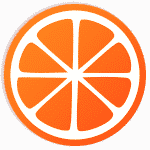We recorded this episode on location in Alaska during a dream trip to King Salmon, Alaska, and let us tell you: we struck nutrition gold here!
Because there are few foods that can do more for your health, with less effort, than wild salmon. The truth of the matter is that not all fish are made equal. The salmon in Alaska are actually better for you and better tasting than what you’ll find in most other areas of the world or from salmon farms.
But there’s another reason that getting seafood from Alaska is a step above almost anywhere else: it’s sustainable! Policies are put in place to ensure that they aren’t overfished, allowing the salmon population to sustain itself year over year. They also utilize every aspect of the fish, from the meat to the skin to the oil, further increasing the efficiency and sustainability of their fishing practices.
Now, we have to acknowledge the elephant in the room: wild salmon are generally more expensive than other fish. That’s true, but after seeing all of the work that goes into processing these salmon so that every piece of it can be used productively, we understand why. You also don’t need to be eating huge portions of wild salmon because it is so nutritionally dense. So even though it may be more expensive per pound, you can actually get half of the omega-3s your body needs for an entire week from just one 4oz portion.
So, having a small 4oz portion of wild salmon just twice a week can make a huge difference in your health, without making that big of a dent in your wallet. Our brains are also about 60% fat, and there are a number of remarkable studies about there about how increasing those healthy fats has helped the brain heal from a variety of injuries, so there’s actually some truth to that old wive’s tale that fish is brain food!
We recommend incorporating at least one good plant or seafood source of omega-3s every day, but if you can’t access high-quality wild salmon, we suggest high-quality supplementation. Our favorite brand is Pure Encapsulation because it is a really pure source of what you want, as the name suggests, and most people should be taking about 1000mg per day, as a baseline, if you aren’t getting the omega-3s in your diet (by comparison, a 4oz portion of sockeye salmon can give you about 2700mg).
So, now that you now, go get yourself some tasty salmon!
Resources:
- Learn more at alaskaseafood.org
- Instagram: @foodtrainers
- Facebook: facebook.com/Foodtrainers
- Twitter: @foodtrainers
- Read: The Little Book of Thin: Foodtrainers Plan-It-to-Lose-It Solutions for Every Diet Dilemma

